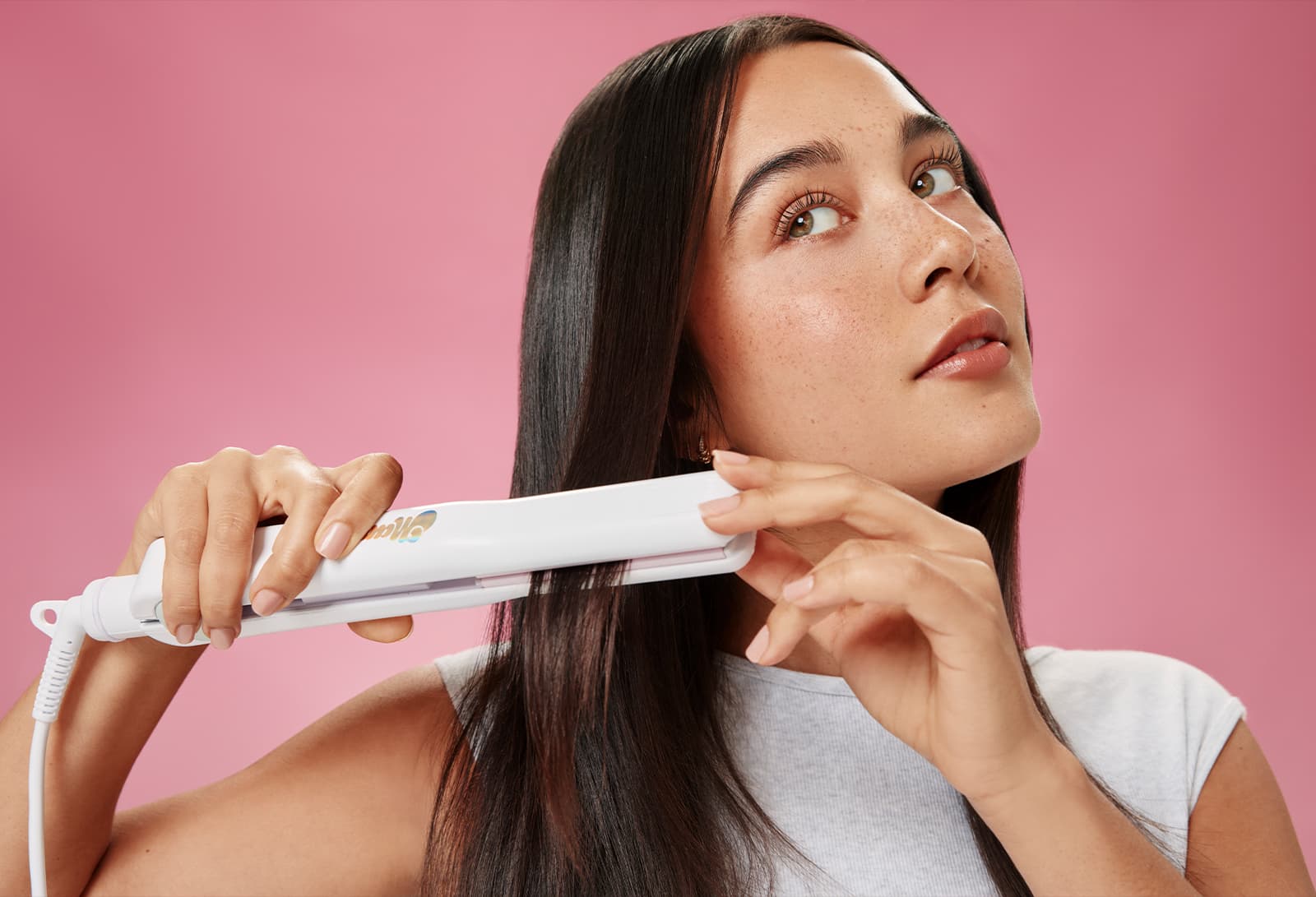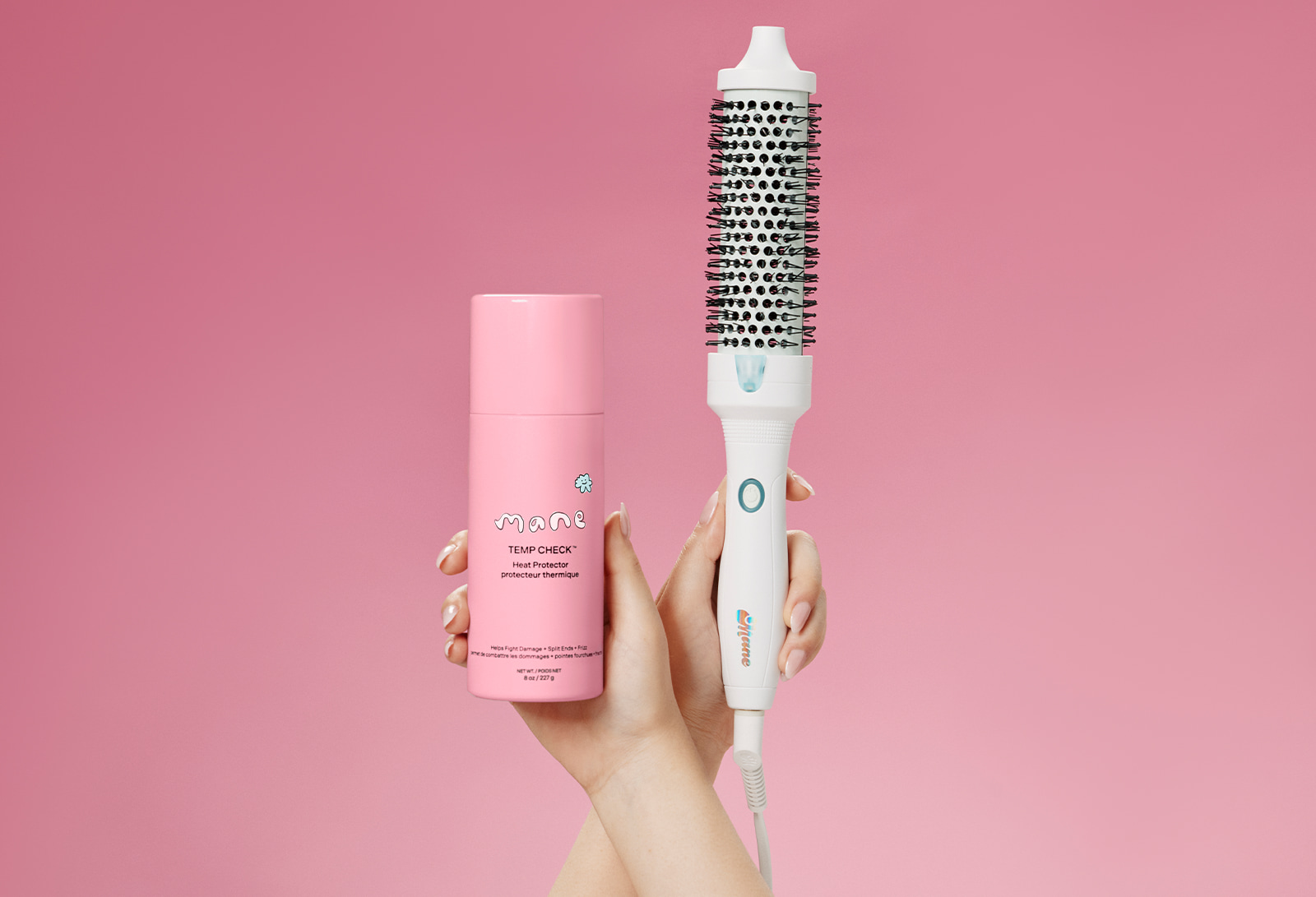Key Takeaways:
When the now beloved Mane debuted in 2023, it didn’t simply aim to be another haircare brand—it intended to be a vibe. Dreamed up by celebrity hairstylist, entrepreneur, and former Ouai founder Jen Atkins, and brought to life in its current form under the stewardship of CEO Rachel Jonas Gilman, Mane has grown from editorial into one of the most joyful and strategic new players in Sephora’s ever-expanding haircare universe.
“Mane launched in 2023 as a hot tools brand,” Gilman explained to BeautyMatter. “It was born out of an editorial platform called Mane Addicts, which really existed for more than 10 years as a playground for hair stylists and the hair industry.” The brand’s decade-long listening tour through Mane Addicts became the foundation for what would eventually become a vibrant, emotionally intelligent brand targeting Gen Z and younger millennials with heat tools, brushes, and now, stylers. Using digital content and physical products, Mane has developed a clear throughline: community-led insight, technicolor creativity, and an obsessive attention to how real people style their hair.
After launching DTC, Mane expanded into every Sephora store in February 2024. The strategic move has helped the brand gain exposure and validate its joyful aesthetic in an increasingly crowded market. “Sephora is an amazing partner,” Gilman said. “They’re really investing in their new store footprint. Hair is now moving to the front of the store, [and] it’s great to see this evolution in the beauty industry.” In fact, according to a recent Circana reports, the haircare category emerged as one of the strongest within prestige beauty. It grew by 4% in dollars in Q1 and experienced single-digit growth in the mass market. In prestige, styling products were the top driver, increasing by 12%.
For Mane, the shift is more than just shelf placement. It is more so a statement of relevance. “They’re just a really wonderful platform for us to get exposure and build brand awareness.” The results speak for themselves. Mane’s Hot Round Brush, its hero SKU, sells one unit every eight minutes—an impressive feat in the competitive tools category. “It actually comes in three different sizes … medium, large, and we just launched a jumbo. [This] is really something we’re proud of,” Gilman revealed.
Branding with Heart and Hair Clips
If Ouai was Jen Atkin’s cool older sister—clean, minimalist, chic—then Mane is the younger sibling throwing glitter around a Lisa Frank-themed bedroom. The brand leans heavily into nostalgic color palettes, joyful packaging, and an unmistakable voice. “There’s really nothing beige millennial about the brand,” Gilman said jokingly. “We are all about pink and fun, and we have super cute graphics and emojis.” Even its newly launched stylers debuted with a new logo—a whimsical cloud and handwritten type—drawn by Atkin’s 12-year-old goddaughter.
This blend of whimsy and authenticity extends into Mane’s product expansion. With the launch of its wet stylers, the brand expands into refillable SKUs, including heat protectants, dry texturizers, hair oils, and hair and body mists, all designed to layer seamlessly with its tools. “We knew that we would want to have SKUs that were replenishable to help expand the business,” Gilman said. “But really, to also meet our clients where they are in their journey and serve all of their needs.”
The brand revealed to BeautyMatter that it is projecting a 50% increase in unit volume in the second half of 2025 with the introduction of its new stylers. “This expansion is a major unlock for Mane. We’ve strategically planned the line to drive a 35% incremental lift on an annualized basis, not just through new doors, but by increasing productivity with a replenishable line. It’s a signal of how confident we are in the strength of our pipeline and our ability to continue scaling without saturation,” it said.
Each formula was built through rigorous testing, guided by market research and emotional sensibility. “We work with different contract manufacturers, and there’s a long process of testing it and working with different panels and doing consumer testing,” Gilman revealed. “At the same time, we’re also working on the packaging, the size we want, the price we want to hit, and how it looks on the shelf.” Even the scents are intentional. Two signature fragrances—Pinky Promise and Sea Sweet—appear across the new stylers, accompanied by recognizable icons that help shoppers identify which scent they’re selecting.


Structuring for Scale and Simplicity
Mane’s product development doesn’t begin in a lab. It starts with its people. The brand’s internal segmentation breaks its audience into specific cohorts, with nicknamed personas guiding the approach. “We have three different groups that we focus on,” said Gilman. “Gen Alpha is an audience that we’re listening to a lot. We call our Gen Alpha audience ‘Paloma.’”
Understanding this digitally native audience—that is, what they use, how they shop, and how they self-express—led to deeply informed choices in color, scent, and even messaging. “We reference ourselves as ‘easy beauty for cuties,’ because we really just want that to be the vibe you feel when you're experiencing our brand.” It’s a powerful contrast to the overtechnical positioning that plagues many beauty start-ups. Mane’s accessibility isn’t just about price—it’s about joy.
The road hasn’t been without obstacles. In its initial iteration, Mane launched a multiattachment hot tools system anchored by a single base—a power bottom—and interchangeable heads for styling. While innovative in theory, customers found it too confusing in stores.
“When the brand first launched, we launched with a styling attachment system,” Gilman recalled. “We very quickly realized that it was confusing to the client. And so, coming in as a new CEO to the brand at the time, I was able to really look at it and learn and very quickly pivot.” This resulted in a more focused hero-SKU strategy and a commitment to clarity. “We’re not looking to launch hundreds of SKUs. We’re looking to launch the right SKUs,” she added. “That’s why we’re spending so much time listening to our audience.”
While the brand wears pink on its sleeve, its inclusivity isn’t just aesthetic. “Yes, I think most of our products do work on all hair types,” Gilman affirmed. “We do testing where we panel test across different hair types. That’s something that’s definitely important to us.” Mane’s focus on accessibility and function goes hand in hand with the brand’s emphasis on emotional payoff. “It really depends where people are on their hair journey—if they like to use heat or not,” she noted. “But we formulate our products to work across hair types.”
Looking Ahead
All of Mane’s formulas are manufactured in the United States, allowing for tighter quality control and quicker iteration. “They [contract manufacturers] are all US-based … and we go to their labs to test products,” Gilman said. “We source the packaging, we decide what the price we want to hit is, what the value is, how it looks on the shelf—these are all considerations.”
The supply chain is as nimble as the brand’s strategy, and with the introduction of stylers averaging $26 versus tools that exceed $100, Mane is now better positioned to increase frequency of purchase and deepen brand loyalty.
As Mane expands its presence and product categories, the brand remains steadfast in its mission to build a beauty company that feels good before it even works. “The mission of the brand is to spark joy, make cute hair accessible to all,” Gilman said.
With Sephora’s support, a bold rebrand, and a hero-first product strategy, Mane is poised to continue capturing a generation that prizes self-expression, aesthetic playfulness, and sensorial rituals. “It was always very clear on what Mane represented from my perspective,” Gilman added. “Easy-to-use styling, accessible, great price points, effective—but most importantly, things that bring joy.” And joy, it turns out, never goes out of style.